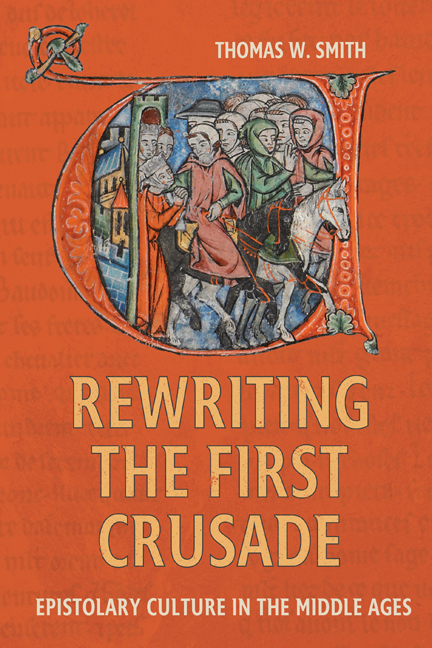Book contents
- Frontmatter
- Dedication
- Contents
- List of Illustrations
- Acknowledgements
- List of Abbreviations
- Introduction
- 1 The Call from the East: The Letters of Alexios I
- 2 The Launch of the Crusade: The Letters of Urban II, 1095–96
- 3 Letters from the Crusader Host, 1097–98
- 4 Letters from the Leaders of the Crusade, 1097–98
- 5 Interpreting the News from the East, 1099–1100
- 6 First Crusade Letters and Medieval Manuscript Cultures
- Conclusion
- Appendix: New Manuscripts of First Crusade Letters
- Bibliography
- Manuscript Index
- General Index
- Crusading in Context
- Frontmatter
- Dedication
- Contents
- List of Illustrations
- Acknowledgements
- List of Abbreviations
- Introduction
- 1 The Call from the East: The Letters of Alexios I
- 2 The Launch of the Crusade: The Letters of Urban II, 1095–96
- 3 Letters from the Crusader Host, 1097–98
- 4 Letters from the Leaders of the Crusade, 1097–98
- 5 Interpreting the News from the East, 1099–1100
- 6 First Crusade Letters and Medieval Manuscript Cultures
- Conclusion
- Appendix: New Manuscripts of First Crusade Letters
- Bibliography
- Manuscript Index
- General Index
- Crusading in Context
Summary
On first appraisal, the cover image of the present book (the attractive historiated initial from MS London, British Library, Yates Thompson 12, fol. 9r – a mid-thirteenth-century copy of the Old French Continuation of William of Tyre) is not the most obvious choice, for there is not an epistle to be seen. It depicts the departure of Godfrey of Bouillon and his contingent on the First Crusade. A band of ten male pilgrims is shown riding out from a walled city. Most of them are looking back to three women – presumably their kin – standing in the portal of a city gate. The pilgrims lock eyes with those they are leaving behind and both parties wear worried expressions. One crusader in the front rank, though, wearing a green hood, fixes his eyes on the road ahead, pointing the way for the rest of the group. What, then, does this departure scene have to do with epistolary culture? There are two minor points in favour of connecting the miniature to the subject of the present book. The first is that Godfrey is named as one of the authors in absentia of one of the most widely copied documents from the crusade: the Laodicea letter. The second is that Godfrey's departure followed the pope's muster date of 15 August 1096, which Urban circulated in his letter to Flanders. But there is a third reason that is more compelling. The miniature can be viewed as an avatar for the social networks that were essential to the production, delivery, consumption, and further transmission of the epistolary output from the First Crusade. The pained glances between the pilgrims and their kin cross a palpable void, signalling the physical distance between crusaders and their contacts that existed during the campaign, something recognised by Nicholas Paul: ‘The great distances that separated participants on the crusade from their families and friends at home and the physical, spiritual, and psychological challenges that they faced while on the march were all catalysts for the creation of written as well as non-written correspondence.’1 It was the epistolary form which allowed correspondents to bridge this gap, and the letters stemming from the First Crusade represented vectors for socio-literary networks that tied separated communities of letter-writers and recipients together.
- Type
- Chapter
- Information
- Rewriting the First CrusadeEpistolary Culture in the Middle Ages, pp. 194 - 196Publisher: Boydell & BrewerPrint publication year: 2024



